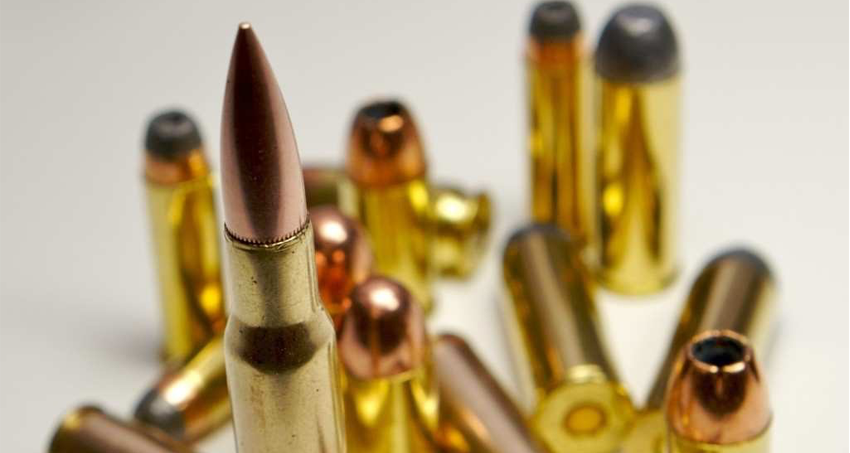 Back to News
Back to News
November 28, 2018
New York Times Traditional Ammo Reporting Hits Left of Center
I just knew it was too good to be true. Splashed across the New York Times this weekend was a feature article that showed respectful and even positive imagery of a hunter harvesting an elk.
I know. I thought the same thing. New York Times? Really? I couldn’t believe it, that was, until I saw the headline that read: Poisoned Wildlife and Tainted Meat: Why Hunters Are Moving Away From Lead Bullets.
Dutifully, I read it, trying to keep an open mind. I also read the sidebar: A Vegetarian Reporter Explores a Hunting Dilemma.
I should have expected it. A confessed cheating-and-meat-eating vegetarian author took to the field to get an understanding of why hunters aren’t opting to forego traditional ammunition that’s been used to harvest wild game for centuries and would dare to consume that food. In all fairness, I applaud Ian Urbina for going afield. He treated hunting with due respect. He didn’t portray taking wild game as savage and gave true understanding to the importance many of us place on taking responsibility for providing the food we feed to our families. He even gave credence to the ethics hunters place on ensuring responsible harvests.

Facts are Stubborn Things
Still, the article cherry-picked the points to deliver a predetermined conclusion. Urbina, and the New York Times, is misrepresenting the facts when it comes to the safety of wild game taken and consumed with traditional ammunition.
It’s not just generations of anecdotal evidence. The Centers for Disease Control studied it in 2008 in North Dakota. The results might be enlightening to those in Manhattan. Those individuals who consumed wild game taken with traditional ammunition actually had lower levels of lead present in their blood samples than that of the general population.
Urbina did address the concerns we share when calls arise for outdoorsmen and women to abandon traditional ammunition. Hunters should have the choice of the ammunition they shoot. The cost, as Californians are learning, is prohibitive for many. The industry offers alternative ammunition options. Demand for these alternatives is low, just one percent of the entire ammunition market because of the associated production cost that is passed on. For many hunters and recreational shooters, that increased cost could translate to reduced range time or worse, giving up their hunting traditions.
Cheap Shots
Urbina mentions, albeit briefly, that the Obama administration attempted a ban on traditional ammunition on all federal lands on the last full day in office. NSSF was a leading voice calling for this to be repealed because it lacked any scientific input, stakeholder comment or peer review. It was such a naked political power grab, the U.S. House of Representatives Committee on Oversight and Government Reform excoriated the move after their own investigation. On his first day in office, Secretary of the Department of the Interior Ryan Zinke signed an order ending the wrongful policy.
Know the Players
Many times, these calls for ending the use of traditional ammunition is a thinly-veiled attempt to splinter off groups of hunters, pitting one side of our family against the other. They use disturbing images of bald eagles that have ingested lead, insisting they were victim of eating lead fragments from gut piles left by hunters. These are backed by radical anti-hunting groups such as the Centers for Biological Diversity and the Humane Society of the United States (HSUS) and People for the Ethical Treatment of Animals (PETA). They focus intently on the cases of sick eagles in rescue centers but ignore that bald eagles are at the healthiest population levels ever.
The U.S. Fish and Wildlife Service estimates there are 10,000 nesting pairs of bald eagles in the lower 48 states allowing federal authorities to take bald eagles off the endangered species list in 1995 and the threatened species list in 2007. The successful recovery of the bald eagle is due to dollars raised through the Pittman-Robertson excise tax on firearms and ammunition products hunters buy that funds wildlife conservation across the United States – over $12 billion since 1937.
No one believes for a minute that any of that anti-hunting groups, like PETA or HSUS, would be supportive of hunting under any circumstances. We see again, unfortunately, that the New York Times is still shooting left of center when it comes to delivering the truth on traditional ammunition.
You may also be interested in:
https://www.nssf.org/infographic-ammunition-under-attack/
https://www.nssf.org/firearms-industry-excise-tax-dollars-at-work/
Categories: BP Item, Featured, Government Relations, Hunting, Industry News, Media, Media Inaccuracies, Shooting, Top Stories









